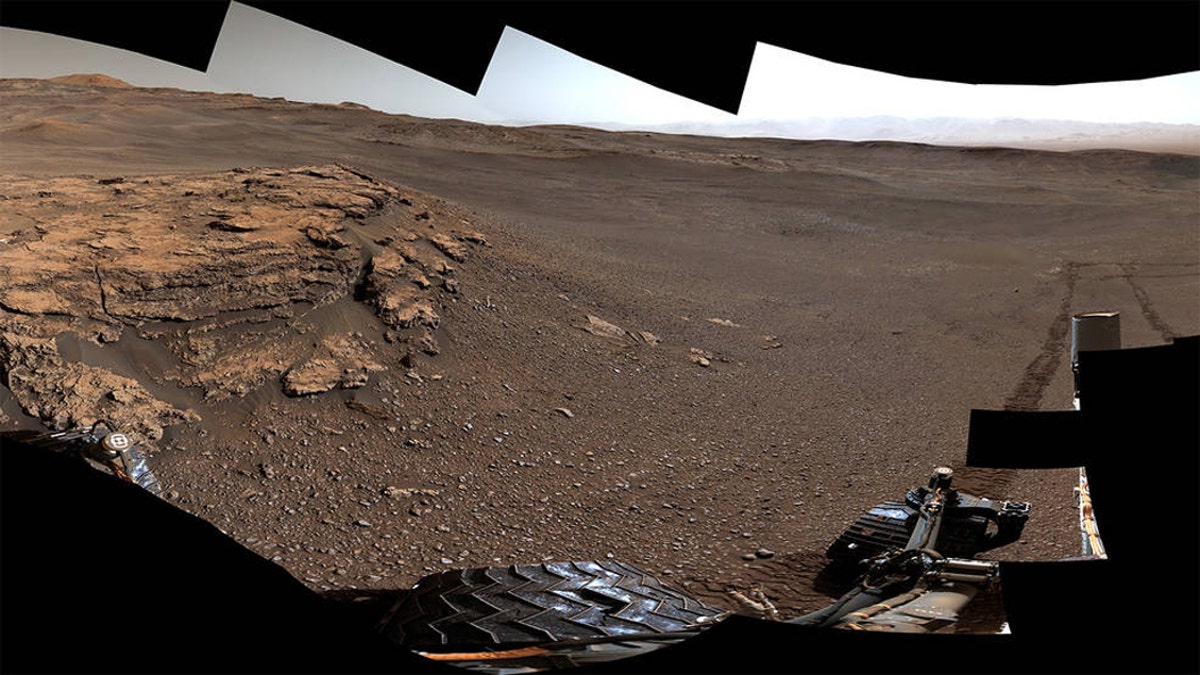Fox News Flash top headlines for August 8
Fox News Flash top headlines for August 8 are here. Check out what's clicking on Foxnews.com
NASA's eventual goal is to put astronauts on Mars, but the space agency's Curiosity rover is keeping it busy in the meantime.
The Curiosity rover, which celebrated its seventh anniversary on the Red Planet earlier this week, has made several remarkable discoveries, including finding "unusually high" levels of methane and a "shiny" object believed to be a meteorite. In a new blog post, NASA said that Curiosity is still exploring the Gale Crater and uncovering the mysteries of the "clay-bearing unit," where it's using its tools to drill into the Martian soil.
"This area is one of the reasons we came to Gale Crater," said Kristen Bennett of the U.S. Geological Survey, one of the co-leads for Curiosity's clay-unit campaign, in the post. "We've been studying orbiter images of this area for 10 years, and we're finally able to take a look up close."

This panorama of a location called "Teal Ridge" was captured on Mars by the Mast Camera, or Mastcam, on NASA's Curiosity rover on June 18, 2019, the 2,440th Martian day, or sol, of the mission. (Credit: NASA/JPL-Caltech/MSSS)
MARTIAN METEOR COLLISION MAY HAVE TRIGGERED A 1,000 FOOT TSUNAMI
The clay was first spotted by NASA's Mars Reconnaissance Orbiter (MRO), prior to the launch of Curiosity. Clay is partially made with water, which is the basis for supporting life as know it.
Curiosity has found "the highest amounts of clay minerals" in some recent rock samples it's looked at. The rover also found high amounts of clay on other parts of Mount Sharp, a mountain on Mars, which the MRO did not detect.
NASA added that scientists are wondering what caused the discrepancy between the MRO and Curiosity's findings. One possible reason is that pebbles and gravels that were encountered by Curiosity were too small for the MRO to see, according to the campaign's co-lead, Valerie Fox of Caltech.
The space agency has also posted a video to YouTube detailing Curiosity's achievements.
The Red Planet once had a very wet surface, covered in wide, ranging rivers. Water may be the lifeblood of our planet, but it's unclear whether Mars ever supported (or still supports) life.
NASA hopes the Curiosity rover, which "has a few more years before its nuclear power system degrades enough to significantly limit operations," can provide additional clues about the planet prior to the launch of the Mars 2020 rover mission.
Mars looms ever larger in America’s space future.
In November, NASA announced that it has selected the location where its Mars 2020 rover will land on the Red Planet. The rover is expected to reach the Martian surface on Feb. 18, 2021. NASA’s long-term goal is to send a manned mission to Mars in the 2030s.
However, former astronauts, including Apollo 11 astronaut Michael Collins, think we should skip a return mission to the Moon, slated for 2024, and "shoot directly for Mars."
CLICK HERE TO GET THE FOX NEWS APP
Fox News' James Rogers contributed to this story.

